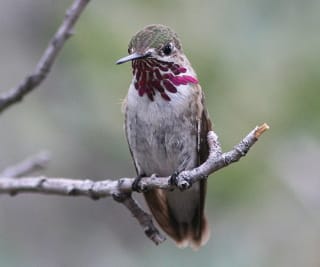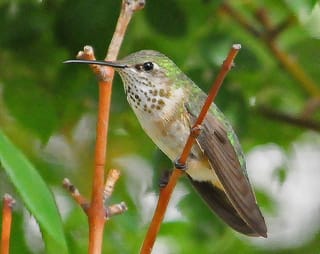Initially this guide displays common birds of all types that are flying right now in our area. Use the selectors below to view rare birds, view birds flying any time, restrict the output to a certain shape of bird, or search by name.
New Mexico is on the western edge of the Central Flyway which is one of the major migration pathways between north and south for birds traveling between breeding and wintering grounds along the Rocky Mountains. This has resulted in the state having an incredible diversity of birds with over 550 different species reported. A little more than half of this number are sighted annually on the Pajarito Plateau. Some of these birds are full-time residents, some migrate here for a few weeks or months, and other are only seen briefly as they pass through the region.
This guide features many of the birds known to frequent Los Alamos county by when they are likely to be seen in the area. You can get additional information on local birds by joining PEEC Birders or going to the eBird website. eBird also includes lists of rare bird sightings and birding hot spots.
Bird References
Birdweb
Cornell Lab of Ornithology
eBird
eNature
Institute for Bird Populations
National Audubon Society
New Mexico Ornithology Society
What Bird
xeno-canto
Subject Area Experts (all guides)
Steve Cary (butterflies)
Beth Cortright (insects)
Terry Foxx (invasive plants)
Leslie Hansen (mammals)
Richard Hansen (fish, mammals)
Dorothy Hoard (butterflies, trees)
Chick Keller (flowers, herbarium)
Shari Kelley (geology)
Kirt Kempter (geology)
Garth Tietjen (reptiles)
David Yeamans (birds)
Web Development and Content Management
Pat Bacha
Jennifer Macke
Graham Mark
Akkana Peck
Contact
Please contact us for local nature questions and sightings. We welcome comments, corrections, and additions to our guides.
For more information about local nature, please visit our Nature Blog or subscribe to PEEC This Week.
Make Selection
 Photo: male by Hari Viswanathan  Photo: female by Jerry Oldenettel |  Calliope HummingbirdCAHU (Selasphorus calliope, Trochilus calliope)Family: Trochilidae (Hummingbirds) Size: 2.8 - 3.3 in (7 - 8 cm) Flies: Jun 15 - Oct 07 Morphology: these small birds look even smaller than they are due to a hunched posture; both males and females are green above and whitish below; males have a set of magenta rays on the throat and a light green wash on the sides; females have green stipling on the throat and a peach wash on the sides; immatures like females Status: native; locally common Food source: eats nectar and insects Habitat: montane, mixed conifer clearings, brushy edges, alpine meadows The Calliope Hummingbird is the smallest hummingbird in North America. Despite its small size, it can survive cold summer nights at high elevations and can be seen as altitudes as high as 11,000 feet (3,350 m). Typically these birds will feed while hovering at flowers that are close to the ground. They may also perch and fly out to capture insects midair or to pluck them from foliage. They are attracted to feeders with sugar-water mixtures. Nests are camouflaged, compact cups lined with things like plant down and spider webs. First flight is at about 3 weeks of age. Info Photos Distribution Frequency |
